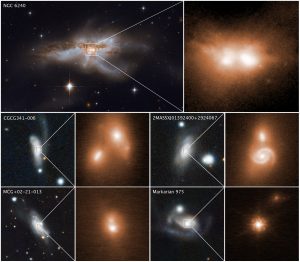Santiago, Nov 18 (EFE).- A team of astronomers, including some from Chile, has found a relationship between the collision of galaxies and voracious black holes that could be a key element in solving heretofore unanswered questions in astrophysics, investigators said.
“Thanks to this work, today we’re closer to resolving two big enigmas in astrophysics: how galaxies form and how supermassive black holes living in the center of them grow, and – even more important – why both processes are connected,” Ezequiel Treister, with Chile’s Astrophysics Institute at the Universidad Catolica, said in a communique sent to EFE.

“What we discovered is that almost 20 percent of the fast-growing black holes … are associated with the last phases of the process of galaxy collision. That is, a little before they merge and form a single colossal black hole,” said Treister, who is also a researcher at the Center for Excellence in Astrophysics and Related Technologies (CATA).
The research was recently published in Nature magazine and combined 20 years of observations with the Hubble Space Telescope, data obtained by the Neil Gehrels Swift X-ray Observatory, both operated by NASA, and the Keck optical telescope in Hawaii.
The study itself lasted for eight years and included about a dozen scientists, headed by Michael J. Koss, with Eureka Scientific Inc. in California, who emphasized that the work shows what will happen when the Milky Way merges with the Andromeda Galaxy and their respective central black holes spiral into one another.
The research could lead to predictions about the type of galaxies in which these cosmic events occur, he added.
The work analyzed almost 100 galaxies containing growing black holes, along with some 200 inactive galaxies used for comparative purposes, Treister said.
Those galaxies are located at a maximum distance of a few billion light years.
The study concluded that black holes that are surrounded by dust and gas produced by galactic mergers have a greater probability of participating in this type of process, he said.
The team now intends to study how the black holes are fed and grow during the galaxy-merger process and how they interact with the galaxies that house them, but to get the viewing resolution required for that task, which is 10 times greater than that provided by the Hubble, they will need to use other instruments, including the Atacama Large Millimeter/submillimeter Array observatory in northern Chile consisting of 66 huge antennas set up more than 5,000 meters (16,400 feet) above sea level.
